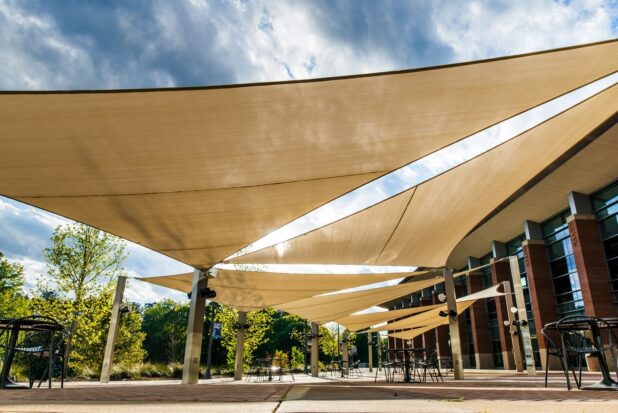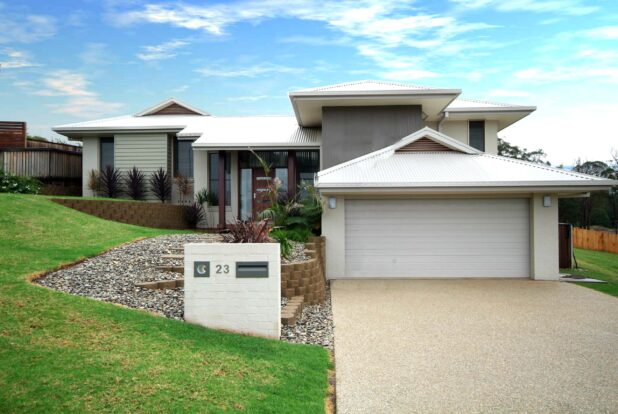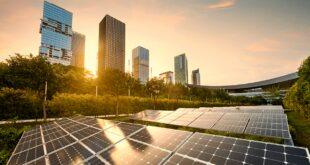When it comes to climate change, the evidence is overwhelming. The vast majority of scientists are in agreement that its effects are being felt across the globe. Numerous cities around the world are struggling with the consequences of rapidly rising temperatures.
Have you ever found yourself uncomfortably warm while walking around a city on even mildly hot days? You’re not alone— this phenomenon known as the “Urban Heat Island effect” is creating increasingly uncomfortable living conditions for millions of people who inhabit these urban environments. In this post, we’ll read about reducing air pollution and explore some other steps an individual can take to combat the worrisome UHI effect and become more comfortable in their city living environment.
Table of Contents
Reduce Air Pollution

Reducing air pollution is an essential step in tackling the urban heat island effect. The key to doing this on an individual level is simple: reduce, reuse, and recycle. This means more than just deciding which bin to throw something in, it’s about becoming aware of all the little changes you can make every day, which will have a big impact in the long run. For instance, using public transport or cycling instead of driving your car will reduce emissions significantly, as well as switching to energy-efficient appliances when possible. Most importantly, though, don’t be afraid to take the initiative and share your actions with family and friends. Such grassroots movements can have a hugely beneficial effect on our environment and, in turn, help combat the uncomfortable urban heat island effect.
Plants
Combatting the urban heat island effect can start with the littlest of steps – right at home. Plants are an effective way to reduce air temperature and increase humidity, creating a cooler and more comfortable living space. Strategically placing plants like palms, ferns, and Chinese evergreens in front of windows or around terraces help absorb excess light from the sun and lower temperatures. As an added bonus, these plants have a high transpiration rate, meaning they help keep your home relatively humid and fresh throughout the summer months. So stock up on some flora for yourself today – and don’t forget to water them daily for maximum coolth.
Building Shade Structures

When the weather outside is sweltering, don’t let the sun seep into your own backyard – build a shade structure. Shade structures are an effective solution to combating the urban heat island effect. Not only do they protect against damaging UV rays, but they also provide a sunny-day sanctuary for outdoor activities. Whether you’re throwing a summer BBQ with friends or relaxing in the comfort of your own home, strategically placed shade structures give you the opportunity to enjoy your outdoor living space and beat the heat at the same time. Shade structures can easily be built with easy-to-find materials, giving you a fun DIY project that also reduces your dependence on air conditioning and provides a great way to cool down.
Water Features
Installing a water feature in the yard of your home has become an increasingly popular way to combat the growing urban heat island effect. Without breaking the bank, you can add a fountain, pondless waterfall, koi fishpond, or other water elements as part of your outdoor living space and enjoy a peaceful piece of nature in your own little corner of the city. Water features can be decorative as well as functional. They provide a pleasant respite from the hustle and bustle of urban life. They also help cool down air temperatures by evaporating into the environment and keeping the surrounding area about 5-6 degrees Celsius lower than those spaces without any water features.
Painting Roofs White

Painting the roofs of homes and buildings white can be an easy and effective way to combat the effects of the urban heat island effect. Just by coating our rooftops with special reflective paint, we may be able to reduce the interior temperatures of our homes by up to 20 degrees. That would mean less air conditioning is needed, leading to lower electricity bills while still maintaining a comfortable living environment – it is truly a win-win. So why not make painting your roof white your next DIY project? Not only will you save money, but you’ll feel good knowing that you’ve taken a little step towards helping protect the planet from heating up.
Despite it seeming like an impossible phenomenon to tackle on one’s own, the urban heat island effect is a problem that can be addressed through simple changes on an individual level. These small but powerful steps can make a difference in the temperatures of our cities and lead to action wider than just one person. It all starts with being conscious of our environmental impact and understanding how to reduce it in ways that play into our lifestyles. Surviving the heat isn’t about feeling uncomfortable or failing to take action; it’s about innovating for better living. Together, we can build solutions for a cool future.
 World Magazine 2024
World Magazine 2024






